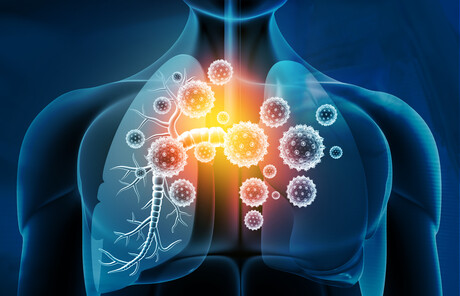Sinusitis is an inflammation of the paranasal sinuses (hollow cavities located in the bones surrounding the nose) due to an allergy or a viral, bacterial, or fungal infection.
Sinusitis is an inflammation of the paranasal sinuses (hollow cavities located in the nose’s bones) due to an allergy or a fungal viral, bacterial or. It is usually accompanied by inflammation of the nasal mucosa, which is often known as rhinosinusitis.
There are four types of paranasal sinuses: maxillary sinuses, ethmoid sinuses, sphenoid sinuses, and frontal sinuses. The most commonly affected sinus is the maxillary sinus, which is the sinus below the cheekbone.
In most cases, sinusitis is secondary to an upper respiratory infection caused by a virus.
It is estimated that they can appear in 5-10% of viral respiratory infections in children and 1-2% of infections in adults.
If you are suffering from sinusitis, visit the website https://runliftyoga.com/ for information on how to relieve your symptoms. You can find yoga poses that will help open your blocked sinuses and improve your breathing, as well as helpful tips on using aromatherapy and other natural remedies to ease your discomfort.
How long can sinusitis last?
They usually resolve spontaneously in seven days with symptomatic treatment. However, in 0.5-2% of the cases, they can be complicated by a bacterial superinfection, which requires treatment with antibiotics.
In general, sinusitis is considered acute if it lasts less than four weeks. If it lasts 4 to 12 weeks, it is called subacute sinusitis, and if it lasts more than 12 weeks, it is called chronic sinusitis.
Causes of sinusitis
The paranasal sinuses are usually sterile cavities, that is, in which there are no microorganisms, or they are colonized by bacteria that do not cause pathology. This is because the secretions produced in the sinus move continuously through tiny cilia in the epithelium cells that line the sinus and drain through a small hole into the nasal cavity.
The mechanism by which sinusitis occurs includes three factors:
- The obstruction of the exit orifice of the sinus, for example, by the inflammation of the mucosa by an infection or an allergy, or when there is a nasal polyp.
- The reduction of the cilia movement in the epithelium covers the sinuses and usually cleans the sinuses by mobilizing the respiratory secretions. This occurs in some diseases of genetic origin, such as Kartagener Syndrome, and exposure to tobacco, some medications, chemical compounds, infections, allergies, etc.
- The increased viscosity of secretions occurs in some diseases such as cystic fibrosis.
When one or more of these factors occur, secretions remain retained within the sinus and become infected, producing acute sinusitis. When these factors are not resolved, symptoms can persist for many weeks leading to chronic sinusitis.
The most common cause of sinusitis is viruses, mainly rhinoviruses, adenoviruses, influenza ( flu ), or parainfluenza viruses.
In 70-80% of cases, bacteria are due to Streptococcus pneumoniae (pneumococcus), Haemophilus influenzae, and Moraxella catarrhalis. It is followed by sinusitis caused by the spread of dental infections generally caused by several bacteria at the same time.
There is sinusitis acquired in hospitals (which we call nosocomial) caused by aggressive bacteria such as Staphylococcus aureus, or what we know as Gram-negative rods. Less commonly, you can get yeast infections like Candida albicans in hospitals.








